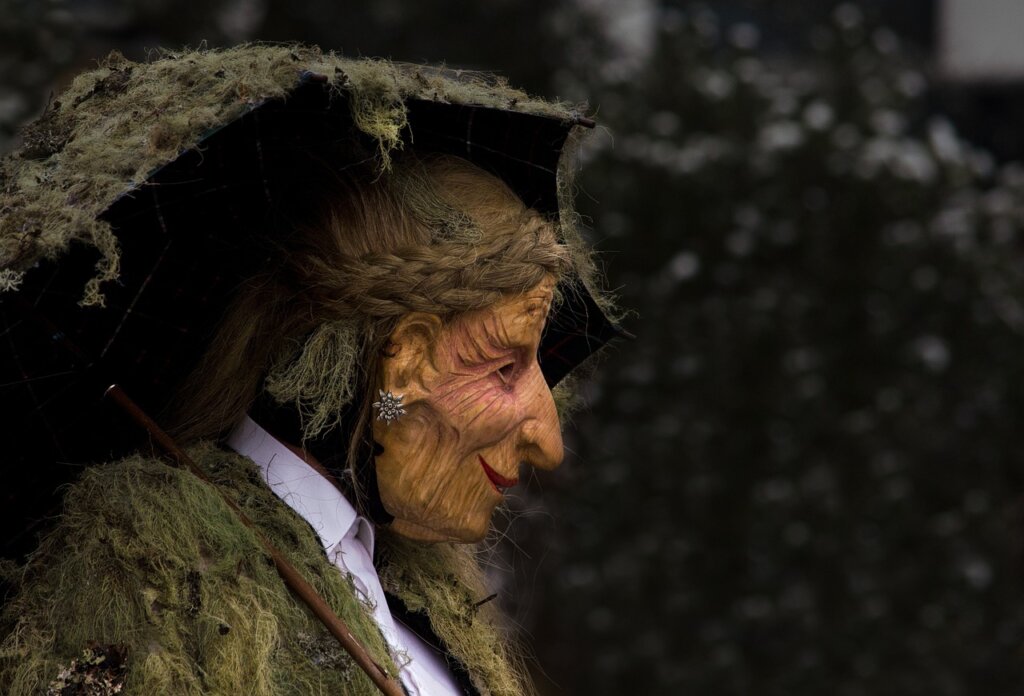The Salem witch trials started in the spring of 1692 in Salem, Massachusetts, after two girls accused women of being witches. Soon, fear, paranoia, and hysteria snowballed into a societal nightmare, with the citizens going on a witch hunt.
Many were brought before judges and sentenced to death with little to no evidence against them, except for the baseless testimony of others.
Needless to say, things got out of hand, destroying lives, breaking apart families, and thrusting their little village into disarray. Before it was over, 200 people were accused of being witches, and many were executed.
This bizarre episode in American history left such an impression that the term trial has been used as a synonym for injustice to this very day.
Here are 25 disturbing facts about the Salem witch trials, and as you’ll see in these trials, no one was safe – not men, not women, not even the family pet.
25. Salem Witch Trials Law
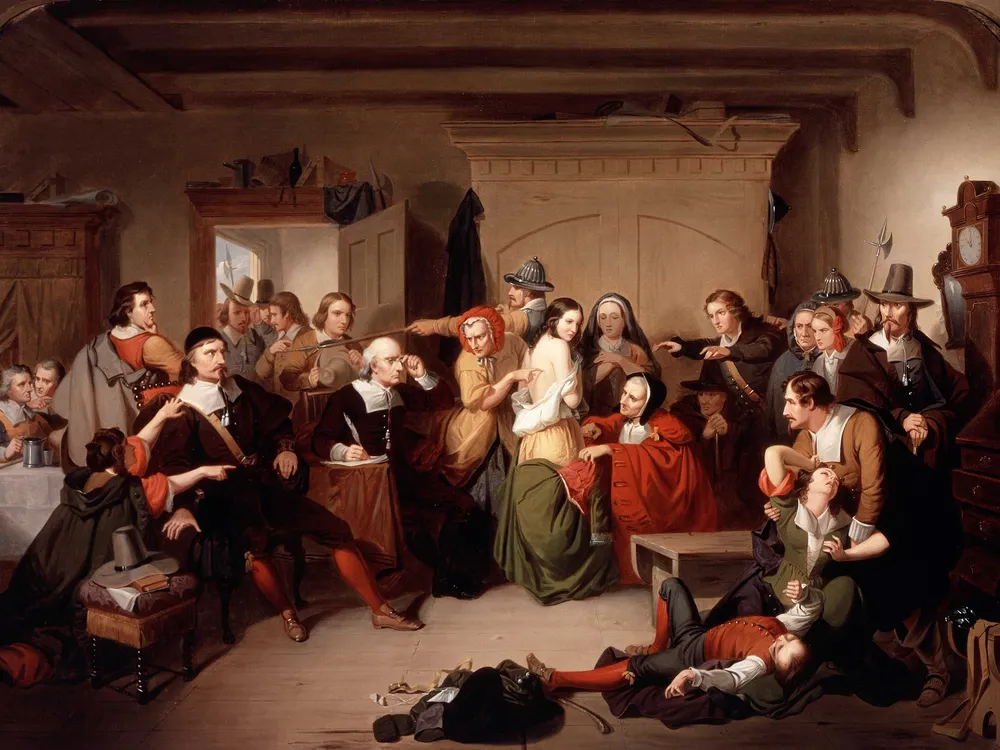
The trials at Salem didn’t work the way we think today, with lawyers and strict rules about evidence. The trials were insane!
Often, these trials would be heavily weighed against the accused, and as such, many saw the writing on the wall and confessed surprisingly. Those who confessed to witchcraft weren’t executed but the others who refused were.
🕯️ Want to experience Salem’s dark past firsthand? Take a guided tour through Salem’s historic sites and hear the eerie tales that bring the witch trials to life! Book your tour now! 👇
🔗 Book the Salem Ghost Tour here!
24. Smallpox
Right before the witch trials took place, a smallpox outbreak spread through the town of Salem. This only added to the brewing hysteria.
Eventually, Reverend Cotton Mather accused Martha Kerry of starting it through witchcraft calling her a rampant hag and queen of hell. Though historical documents show she was merely independent-minded and none submissive.
23. Abigail Williams and Betty Parris
The brutal trials all started because of these two girls. The historical records state they began having terrible fits and would claim to see invisible spirits.
When the doctor examined her and claimed she was bewitched, the trials began, and little Williams started accusing many people, including Tituba, Sarah Goode, and Sarah Osborne.
Related article:- The Witch of Joshua Ward House, Salem
22. Swimming Test
During the trials, many tests were created to determine if someone was a witch or not. In this case, an accused person would have their finger tied to the opposite toe and lowered into a body of water.
Now this test was ridiculous, if they floated, they were a witch, but if they sank, well then they weren’t. The danger, of course, was drowning if they left the suspect in the water too long.
21. Witch Cakes
Another test involved creating a basic cake out of rye flour and the cursed person’s urine. They’d feed the cake to a dog and if the dog showed the same symptoms then witchcraft was proven.
At that point, the dog would reveal the witch. Why a dog? Apparently, they believe dogs had a close association with the devil.
20. Touch Tests
With this test it was believed while the inflicted person was having a fit, if the witch touched them the fit would stop. So they’d have the accused touch those having fits to see if it stops.
Once the accused touched those afflicted and the fits stopped, then they’d point to the accused and call them a witch.
19. Witchcraft Act
These trials were mostly supported by a law passed by the United Kingdom’s Parliament in 1542 called the Witchcraft Act. The act was harsh, making witchcraft punishable by death, and for hundreds of years, more witchcraft laws would be written.
🧙♀️ Step back in time and explore Salem’s eerie locations with an expert guide. If you’re fascinated by the witch trials, this tour is a must!🔗 Book the Salem Ghost Tour here!
18. Dog Execution
Sadly animals were not excused from the trials, like I said before dogs were suspected of potentially being linked with the devil or being the devil himself.
In one case a girl accused a neighbor’s dog of bewitching her, the villagers executed the dog with a firearm but their priest claimed the animal wasn’t the devil because the devil wouldn’t have died.
17. Pressed to Death
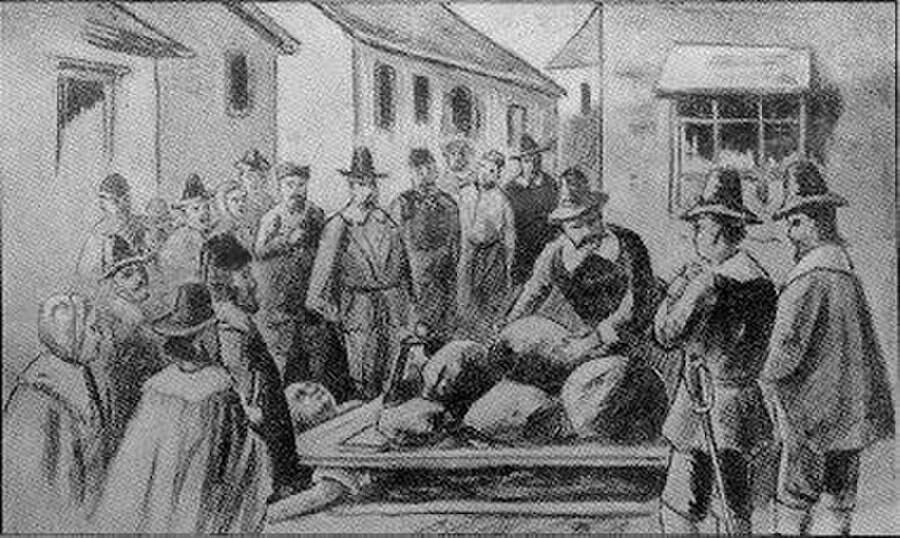
The way they executed people during the trials was quite unusual. In one case, highly successful farmer Giles Corey was accused by three women of witchcraft.
When convicted, the villagers put him on his back, placed a wooden board on him, and then gradually placed heavy stones on top crushing him to death. This form of execution is called pressing. Corey’s last words were, “More weight.”
16. Torture
Torture to get a confession was also a common practice during the trials. Usually, it would lead to bizarre and fanatical confessions.
In one case while a slave named Tituba was being severely beaten, she cried out “The devil came to me and bid me to serve him.” Afterwards she talked about black dogs, red cats, and yellow birds, plus a white-haired man that made her sign the devil’s book.
15. Rampant Accusations
Of course, I’ve already discussed the first two girls who made accusations of witchcraft this was merely the beginning.
After a while many accused others of witchcraft, some took advantage of the hysteria to get back at rival families while others honestly bought into it. Records show a total of 200 people were accused and of those 140 to 150 were arrested.
14. Ergot Poisoning
One theory about what caused the trials is that many in the village suffered from ergot poisoning. It is a fungus that affects rye grain in warm and damp Springs and summers something very common in Salem.
The symptoms of the poisoning are similar to what was described including spasms, fits, hallucinations, delusions, and vomiting.
13. Seizure of Property
While torture and execution are certainly two of the scariest parts of the Salem witch trials. Another act was just as terrifying for many people, the seizure of property.
Many of the accused were landowners and in some cases rather than killing them the local government would take away their land. In a heavily agrarian society not having land or a home essentially thrust you into extreme poverty.
12. Salem Witch Trials Witch Hunt
Eventually, rather than accusations made by others, the trials spawned real-life witch hunters going door to door and asking people to rat out their neighbors.
Naturally, this only added fuel to the fire scurrying many people and causing them to accuse others of witchcraft as well.
11. Devil’s Mark
A common source of evidence against the accused was the devil’s mark. It was believed the devil would make a pact with a witch by leaving a mark on their skin. Some believe these may have been lesions from a disease or a birthmark.
🏰 Discover the ghostly stories of Salem’s past as you walk through chilling locations linked to the witch trials. Join the Salem ghost tour and delve into the supernatural world that’s still active today! 👇
🔗 Book the Salem Ghost Tour here!
10. Mass Hysteria
Back then it’s doubtful many of the villagers in Salem understood what was really happening. They were all suffering from mass hysteria, a social and psychological problem common in malnourished poor, and stressed environments.
Sadly the hysteria and Salem only snowballed and lasted for a while rather than fizzling out after a short time resulting in many casualties.
9. Martha Corey
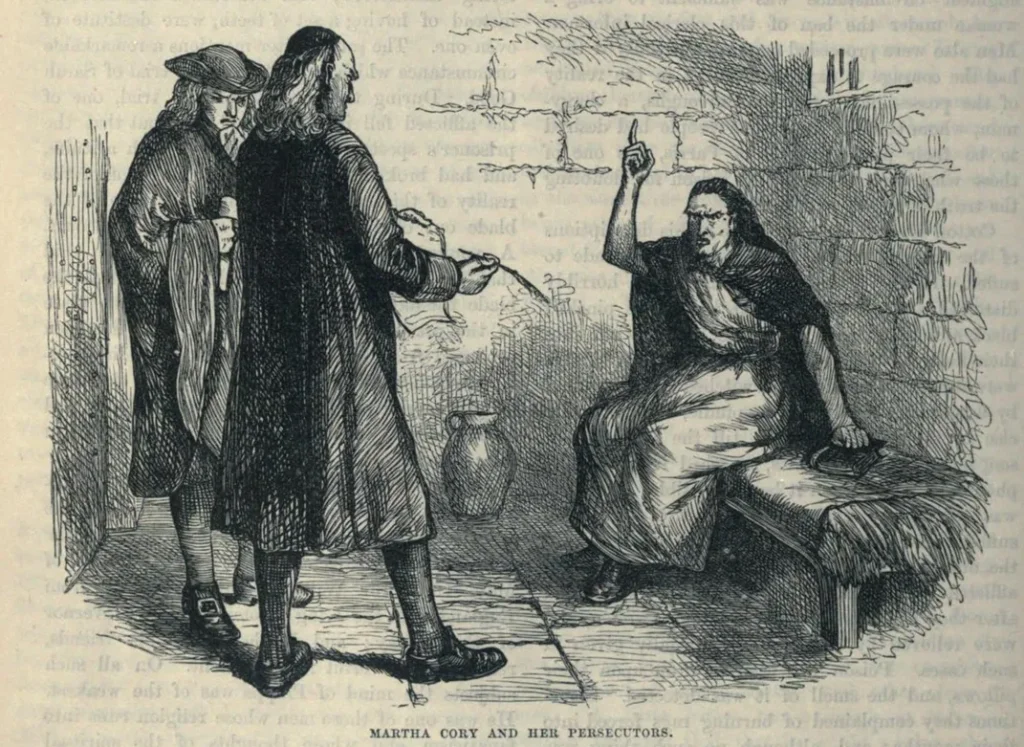
Not everyone bought into the validity of the trials, for example, this woman often spoke up against the examinations and tried to convince others to stop going to them.
Unfortunately for her, this put a target on her back then many pointed at her as a witch thinking she was obstructing the trials.
Oddly enough, when she stood trial for being a witch, even her husband testified against her who was her husband Giles Corey, the man who later was also accused of being a witch and pressed to death.
8. Governor’s Wife
The governor of Salem watched the trials continue for a full year until he caught wind that his own wife was accused of being a witch. After that, he put a swift end to the trials.
7. Gallows Hill and Burials
The place where many of the accused were hung and executed is called Gallows Hill. For years many speculated on its location, but it wasn’t confirmed to be a Proctor’s legend till 2016.
However, no one knows where many of the accused were buried, since they weren’t allowed a Christian burial.
6. George Jacobs
Curiously another form of evidence brought forward by accusers was spectral evidence. That’s right, a testimony of people claiming witches appeared to them in spirit or ghost form.
In George Jacobs’s case, all the witnesses claimed he appeared to them as a ghost and beat them with a cane. Another story claimed Jacobs led a man to the water and tried to drown in there. Despite no concrete evidence Jacobs was found guilty and executed.
5. Ipswich Jail
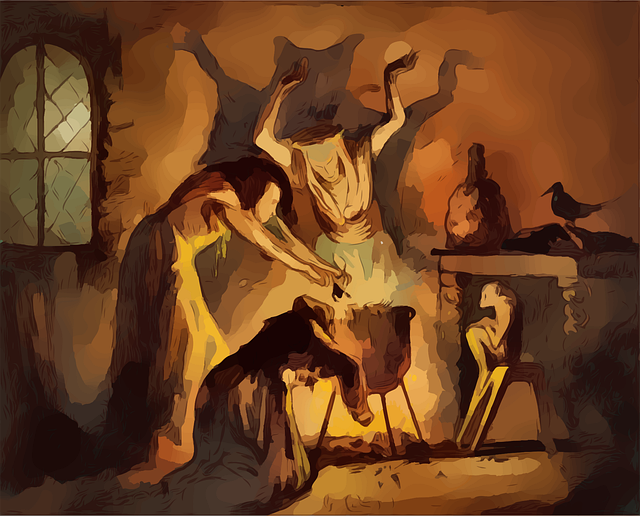
With so many people being accused of witchcraft, authorities had to put them somewhere. So many were placed in the local Ipswich jail, which as you can imagine became very crowded fast.
The conditions were awful, the prisoners were forced to do labor and if they couldn’t afford meals they were only given bread and water. They were also kept in total isolation until they eventually were executed.
4. George Burrows
During the trials pretty much no one was immune to the accusations of witchcraft even ministers. This became especially true for George Burrows, the first and only minister during the trials to be accused of witchcraft.
He was sentenced to death and because of the heat wave, he was hastily buried in a shallow grave with his chin and foot still sticking out of the ground.
3. Burned At The Stake
While popular myth points to burning witches at the stake, no one was executed this way during the Salem witch trials. Though some were burned at the stake in Europe, hanging was the popular mode of execution in North America.
🔮 Ready to uncover the mysteries of Salem’s dark history? Visit haunted spots like the Joshua Ward House and learn about the paranormal activity still haunting the town. Reserve your spot now for an unforgettable experience! 👇
🔗 Book the Salem Ghost Tour here!
2. Not The Only Trials
While the Salem witch trials are the most infamous in North American history, they weren’t an isolated incident. Other witch trials took place in America at the time and the practice was ramping Europe before and after.
1. Total Deaths in Salem Witch Trials
In total, twenty people were executed due to the trials, 19 of those people were hanged at Gallows Hill and one Giles Corey was pressed to death, while four other people died in prison while waiting for trial. The other hundreds of accused were pardoned or found not guilty.
So, which of the following facts about the Salem witch trials disturbed you the most? Comment below.
Disclosure: Some of the links in this post are affiliate links. This means that if you click on the link and make a purchase, I may receive a small commission at no additional cost to you. This helps me continue creating content for you.
